Directing Crowd Simulations Using Navigation Fields
Sachin Patil, Jur van den Berg, Sean Curtis, Ming Lin, and Dinesh Manocha
University of North Carolina at Chapel Hill
Abstract
Virtual crowds have been used extensively in entertainment, training, education, and robotics. One of the challenges in modeling virtual crowds is user control and authoring of the multi-agent simulation to generate desired outcomes quickly and effectively. In this work, we present a novel approach based on navigation fields to direct and control virtual crowds. Our method guides one or more agents towards desired goals based on guidance trajectories. The system allows the user to sketch the paths directly in the scene or import motion fields extracted from real-life video footage. The input guidance fields are blended together to form a goal-directed navigation field to direct virtual crowds. Our approach is complementary to many existing agent-based simulation systems and its usefulness and flexibility is illustrated through examples in which the user creates and edits complex simulations interactively, which otherwise would be difficult to achieve using traditional methods.
Paper (to appear in IEEE Transactions on Visualization and Computer Graphics) (PDF 1.8 MB)
Video (100 MB - DIVX)
Approach

Scenarios
Four groups:
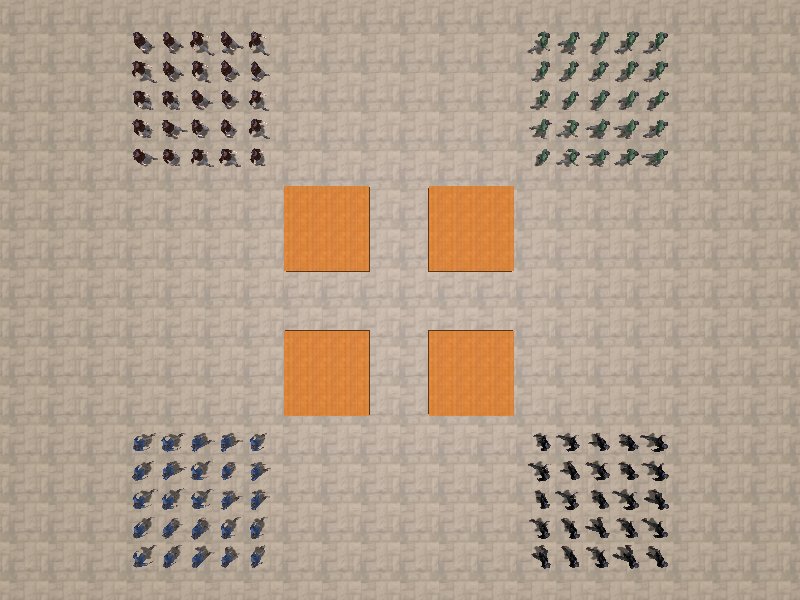 |
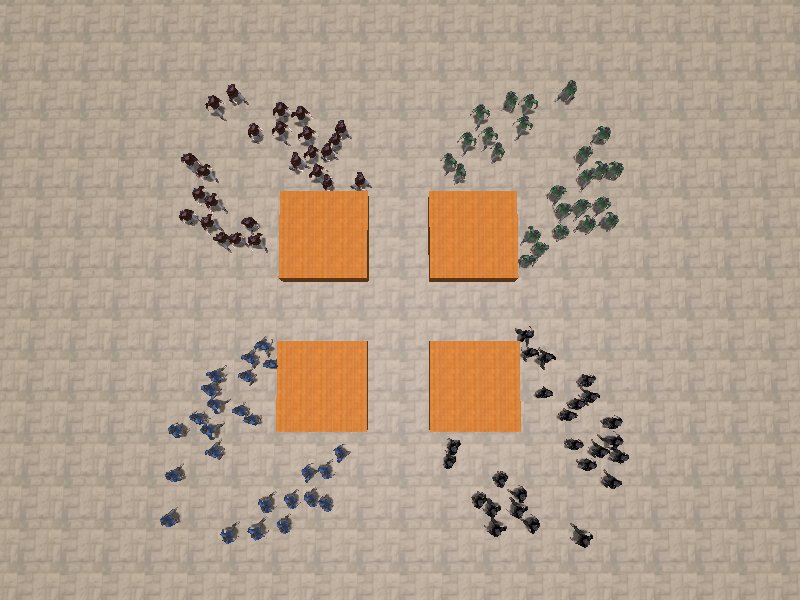 |
 |
Four groups of agents navigate to the opposite corner of the environment. Typical agent-based systems lead to congestion in the center. Our approach allows the user to edit the outcome of the simulation at run-time with ease (as illustrated below):
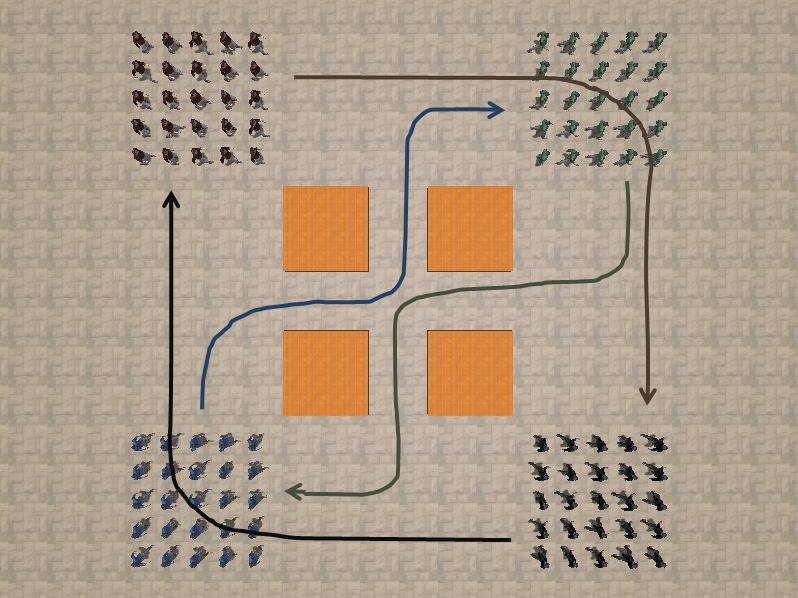 |
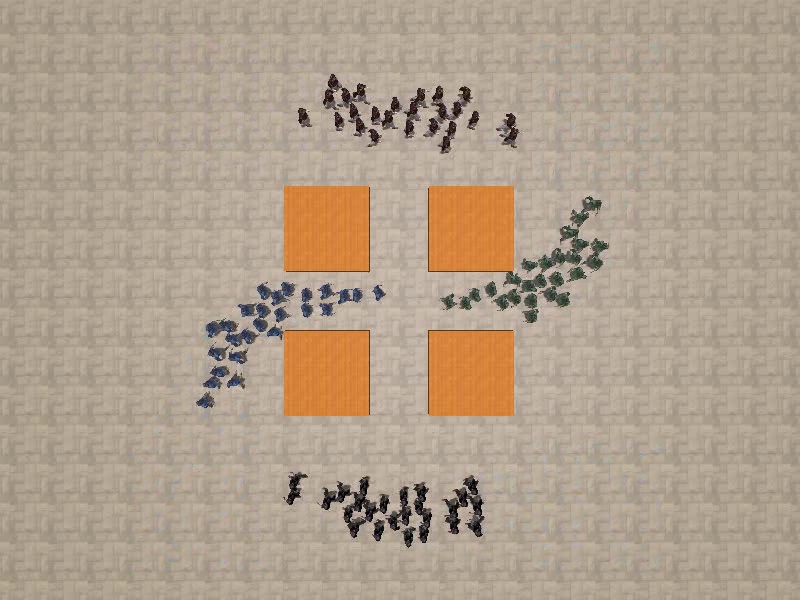 |
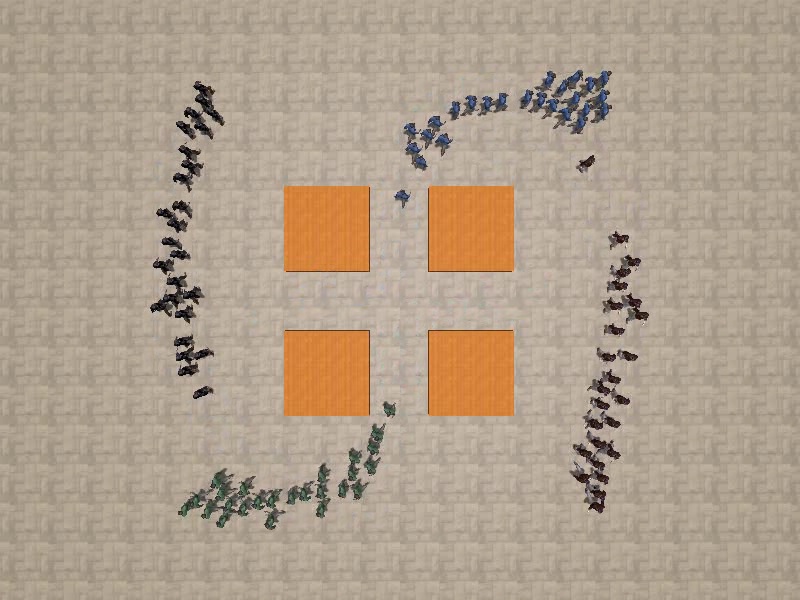 |
Group level motion edit: One guidance field is specified for each of the four groups of agents. Intermediate frames from the simulation are shown. Our approach allows the user to edit the trajectories of agents at an individual group level at run-time.
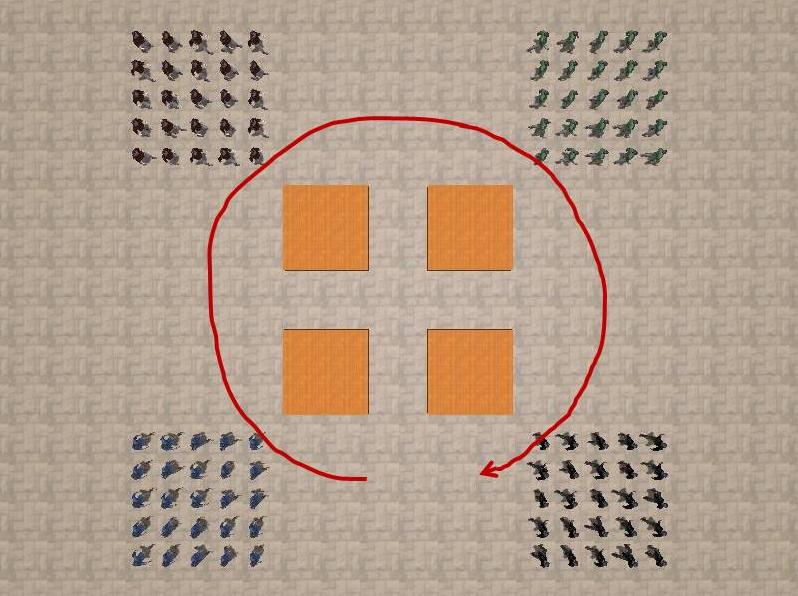 |
 |
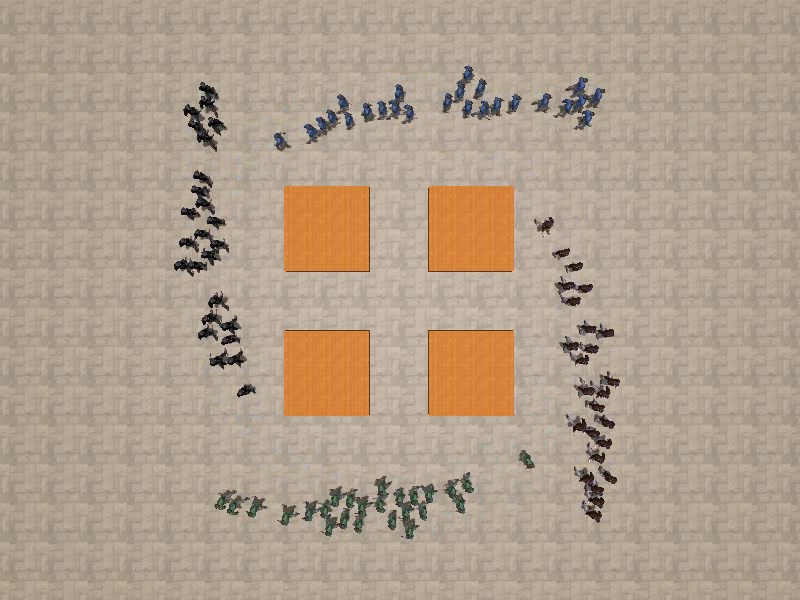 |
Global guidance fields: A global guidance field (clockwise) is applied to all the agents. Intermediate frames from the simulation are shown.
Crosswalk:
 |
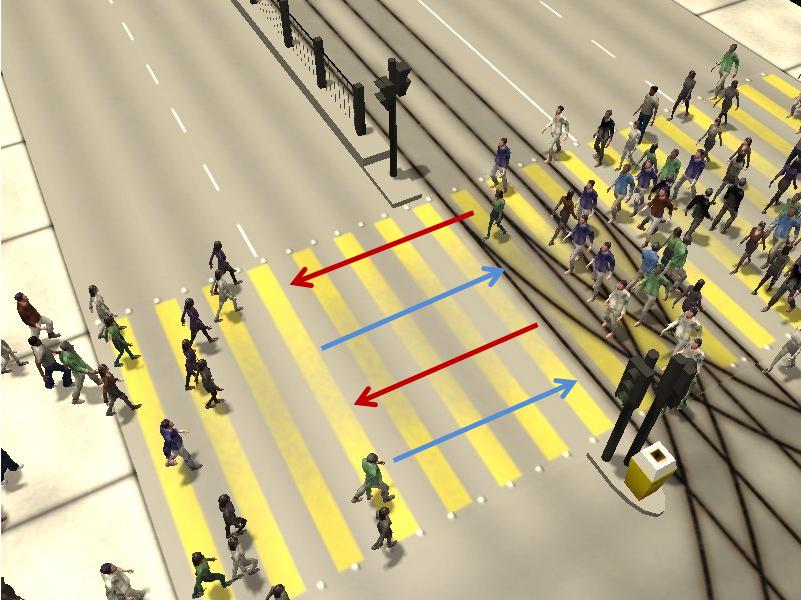 |
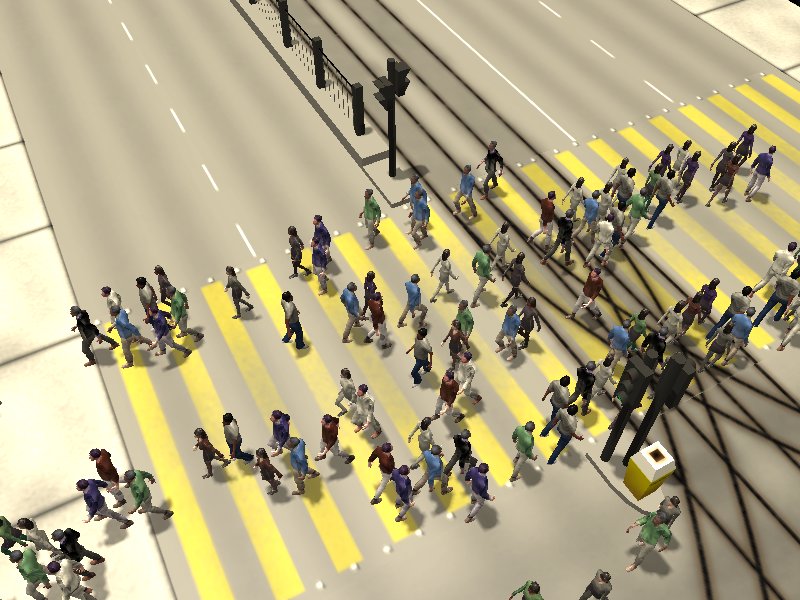 |
Crosswalk simulation: User specifies guidance fields to generate lane formation in the simulation. Our approach provides the user with precise control over when and where lanes form in the simulation.
Subway station:
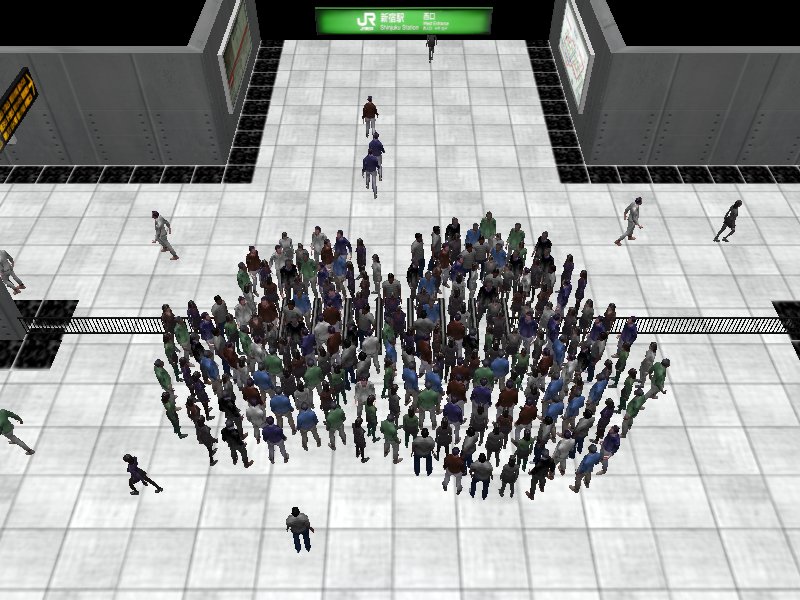 |
 |
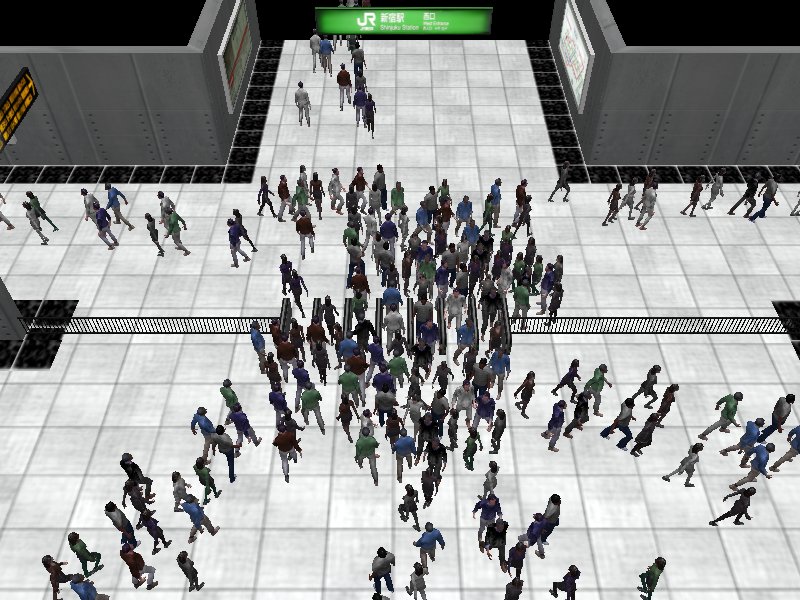 |
Subway station simulation: Subway station lobby with passengers entering/exiting the station. Typical agent-based systems cause congestion at the turnstiles. The user specifies guidance fields (shown in red and blue) for different groups of agents. Our algorithm computes goal-directed navigation fields to guide the agents towards their original goals while conforming to user specified flows.
Guidance fields from video:
 |
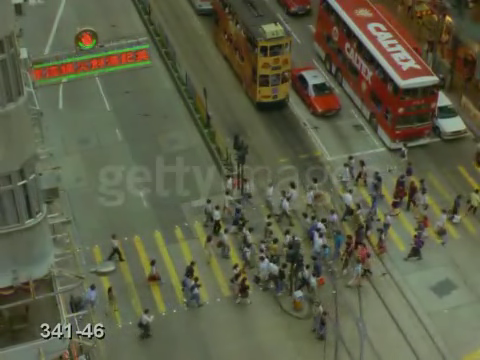 |
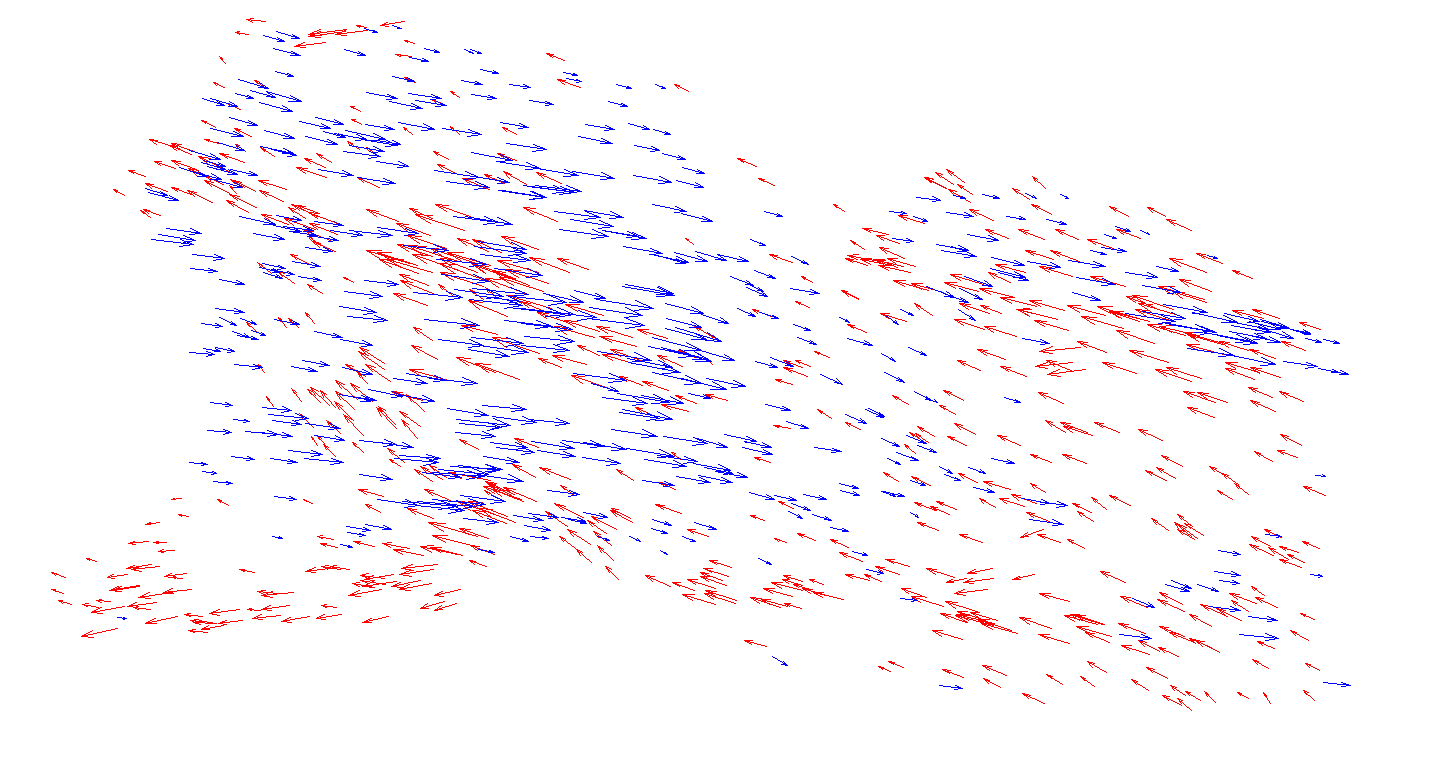 |
Intermediate frames from a video of a crosswalk in Hong Kong and the detected motion patterns (shown on the right).
 |
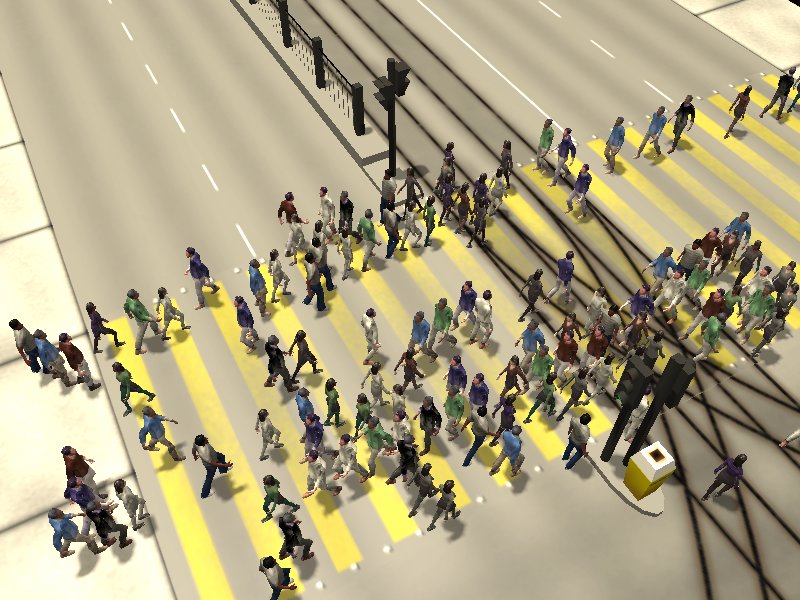 |
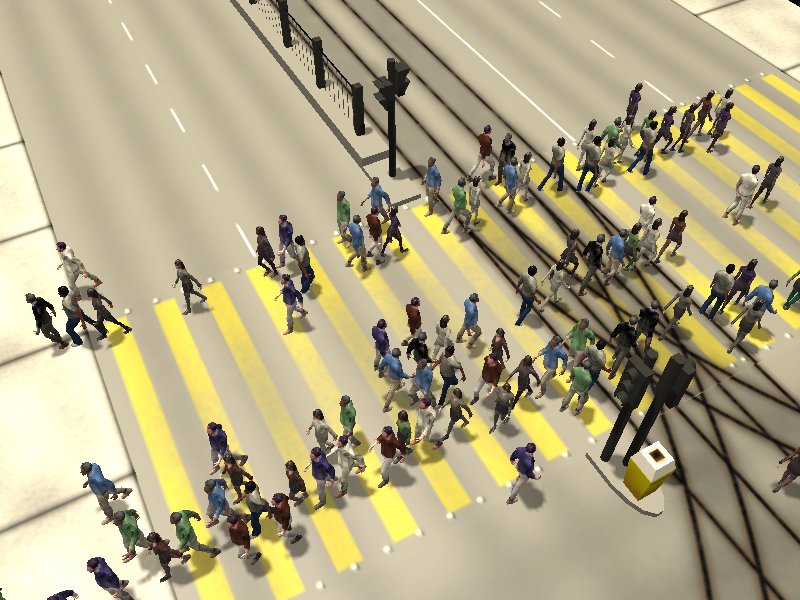 |
Crosswalk simulation: Clustered motion patterns from video used as guidance fields. Intermediate frames from the simulation are shown.
Acknowledgments
This research was supported in part by ARO contracts DAAD19-02-1-0390 and W911NF-04-1-0088, NSF awards 0400134, 0429583, and 0404088, DARPA/RDECOM contract N61339-04-C-0043, Intel, Carolina Development, and Disney. We thank Min Hu, Saad Ali and Prof. Mubarak Shah for making the video and motion flow field data for the Hong Kong pedestrian crossing available to us.
Related work
Interactive Navigation of Individual Agents in Crowded Environments
Reciprocal Velocity Obstacles for Real-Time Multi-Agent Navigation
Composite Agents
GAMMA research on crowd, multi-agent, and traffic simulation